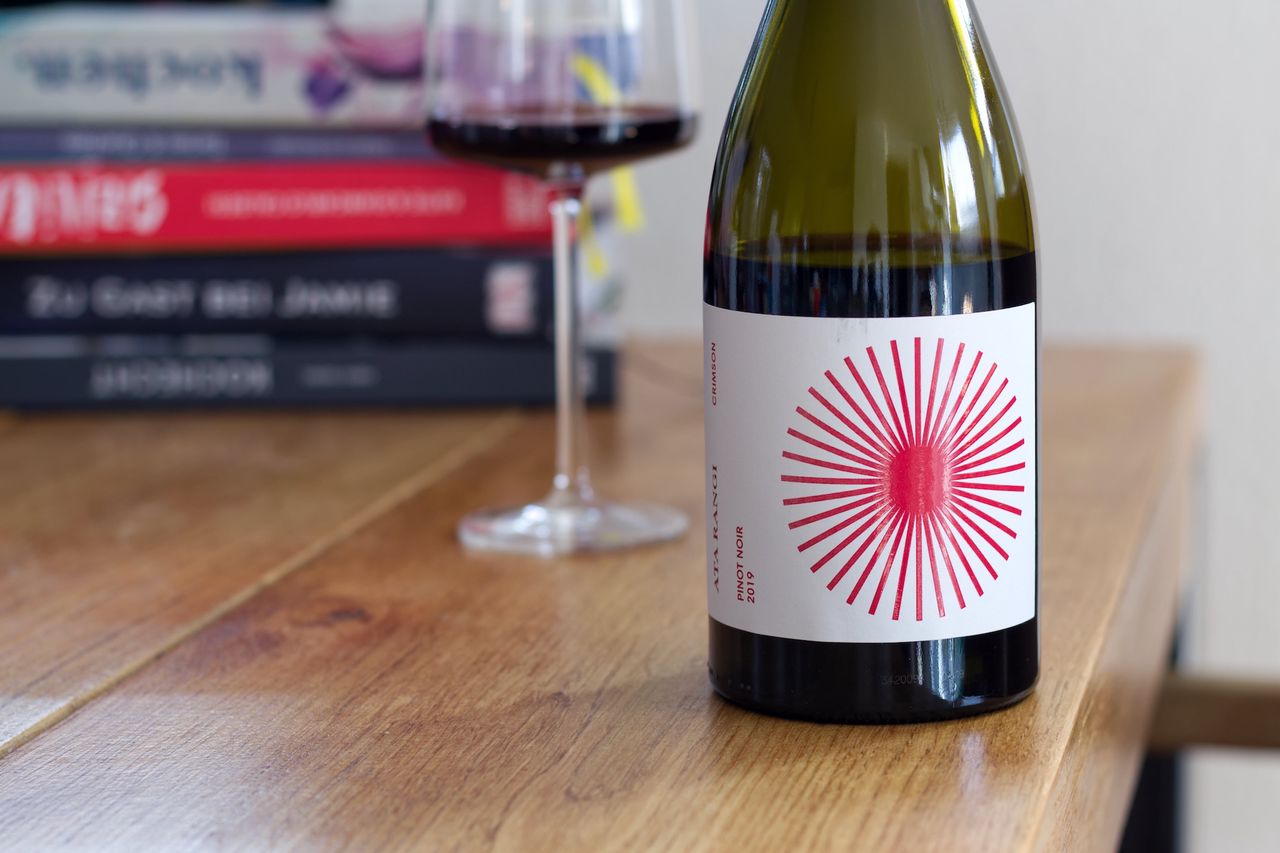Ata Rangi - Crimson 2019
We drink from Martinborough in New Zealand a bottle of Crimson 2019 from the winery Ata Rangi.

Most of the wines on our table are somewhere between brutally regional and pretty regional. But every now and then a bottle from far away makes it into the glass and geographically it is hardly possible to get much further than this bottle. Martinborough is a small sub-area in the Wairarapa region in the south of the North Island of New Zealand not far from the capital Wellington. Only a tiny fraction of New Zealand’s wine volume is produced here by small wineries, most of which are still family-owned. Pinot Noir accounts for about half of the area, followed by Sauvignon Blanc with a quarter of the area and the remaining quarter divided among Chardonnay, Riesling and others. The Ata Rangi winery was founded here by Clive Patton in 1980 and now cultivates about 32 hectares of vineyards. Clive in the meantime spends most of his time protecting nature and planting trees. On a piece of land bought by the winery in 2002, 75,000 trees have been planted since then, mostly local species. This also bridges the gap to today’s wine. This is the entry-level Pinot Noir from the younger vineyards and was named to support the Project Crimson and part of the proceeds also go to the project. The aim of the project is to preserve and care for the Pōhutukawa and Rātā trees, which bloom red around Christmas time (different hemispheres mean different seasons) and are therefore also known as New Zealand Christmas trees. On the label since the 2020 vintage you can also find a stylized drawing of one of the flowers, in case you want to know what it looks like, or alternatively just ask the search engine of your choice for the tree directly. The grapes for the wine are mostly destemmed after hand picking, fermented with wild yeasts and then aged in wooden barrels with 20% new barrels for 10 months.
What you have in the glass then is at first sniffing the olfactory equivalent of a cuddly blanket. That is so soft and harmonious, you want to sleep in it. There is cherry, some violet, strawberries and a bit of wet earth. The result is so soft and inviting that I briefly forget how much I actually like rough edges in wine. That’s just too beautiful. But it still has traction on the tongue, the acidity is there and structure from the wood is there too. When drinking, the Pinot actually seems much younger than when smelling it.
With a day of air, the aroma becomes both cooler and more intense at the same time. Where here the perceived intensity depends enormously on the temperature of the wine in the glass. The warmer the wine, the more power in the nose. It always does feel cool though, even if it comes out of the glass with more power. That sounds complicated and confusing, but it’s much easier to understand when you really smell it than when you write it down and then read it. It has become more herbal, slightly more floral and has got even more forest floor. The wine is still gentle, but it’s no longer a cuddly blanket. The tannin has increased and so has the acidity. Though different, I find this as good as on the first evening and it fits really well with high outside temperature. This is somehow also summer wine and perfect for barbecue.
I’m still amazed at how some wines get softer with more air, while with other wines, like this one, you have exactly the opposite feeling and they gain more structure. More than one evening for a bottle of wine is always a good idea after all. I really like this here and would love to try also the Pinot above this entry or even one of the single vineyard wines. Although that quickly becomes relatively expensive, as entry here already means around 30 euros. For me this wine is worth its price in any case though.